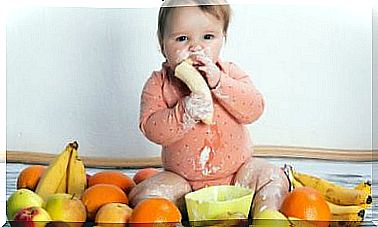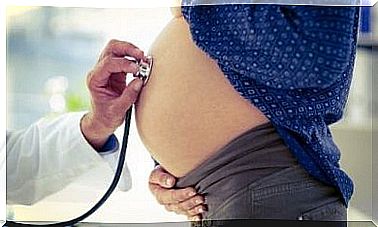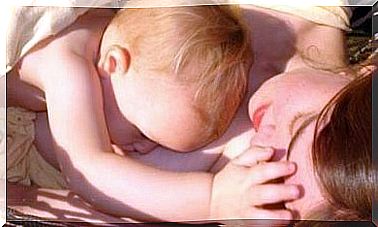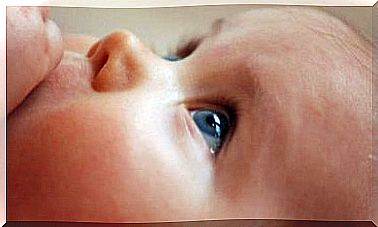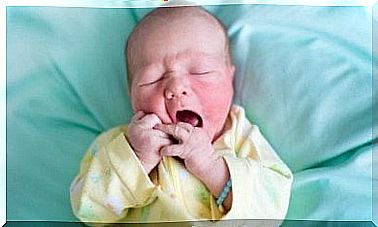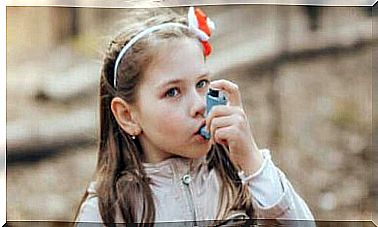A Child’s Lack Of Appetite After One Year Of Age
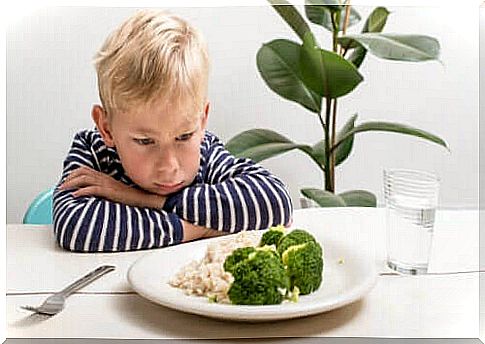
A baby’s eating habits change a lot after their first birthday. Even though the parents offer the usual foods, the child can now reject them and not show interest in eating them. This lack of appetite has to do with age-related physical and mental changes. Many refer to it as decreased appetite.
From the first year of life onwards, a child’s body grows more slowly than before. This happens as a consequence of two independent processes: On the one hand, their metabolism is “slowed down” in terms of rhythm in the first months of life. And on the other hand, the level of physical activity as well as energy consumption is rising.
Should you be worried if your baby, after one year of age, eats less than before? Probably not. Here are some helpful tips to help you through this phase.
Characteristics of a baby’s physiological lack of appetite
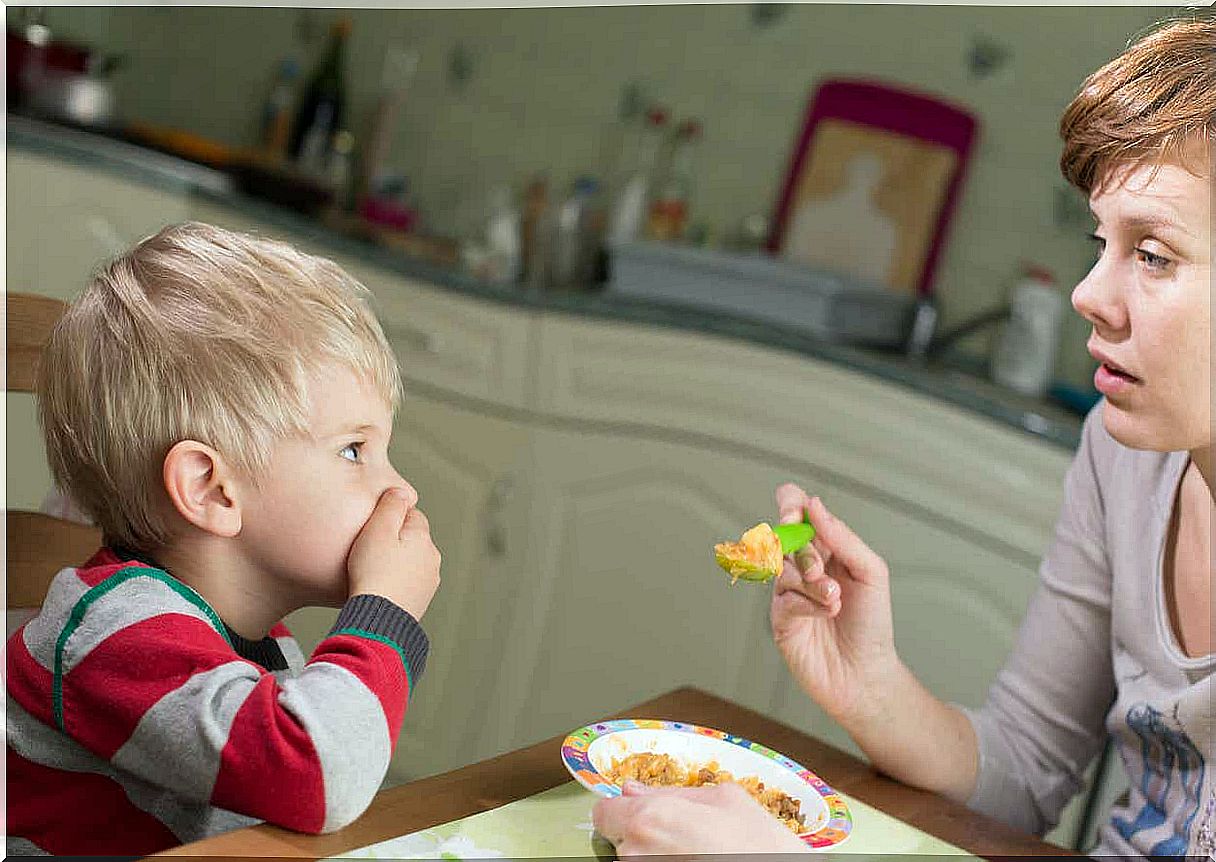
Lack of appetite must be expected at this age. According to estimates, about 30% of children aged 1 to 4 years show some form of refusal to eat. However, only 1% of these have a disease (Lambrischini Ferri, 2007).
It is common for preschoolers to show some kind of difficulty while eating. While this is not a health issue, it is a concern for parents and a source of discussion at the table.
One of the most prominent aspects of physiological inadequacy is neophobia. This means “fear of the new”. It describes the tendency to avoid new foods. This condition occurs very rarely in childhood. It peaks between 2 and 5 years and falls into adulthood.
Although it is somewhat troublesome for parents, it is supposed to be nothing more than human survival behavior.
This is because neophobia has a protective function. People need a varied diet. However, the intake of unknown foods poses a risk of disease and toxicity (Rozin, 1976).
In order to define food rejection as physiological, we must therefore comply with all the following conditions:
- A healthy child who has not shown signs or symptoms of digestive disorders.
- The child maintains a good development in terms of weight and height according to the references for their age and gender.
- The child maintains an activity level and mood appropriate to their age.
What can you do about your child’s lack of appetite?
First of all, be aware that this is a temporary change. It’s something you can expect at this age. Just as you will have experienced infantile colic or breastfeeding crises, you understand that no matter how hard it is to cope with it, one day it will stop worrying you.
Here are some helpful tips for when the situation gets complicated.
Calmness and patience
The relationship between parents and children helps to shape eating behavior. For this reason, the more tense the situation becomes, the worse the outcome will be. And this applies not only to the quantity, but also the quality of the food that the child ultimately gets.
In order for a child to incorporate a new food into his diet, offer it at least 5 to 10 times over time. It is possible to change food preferences if we supply the food in different options (Birch, 1982).
Offer a variety of foods

All people have preferences for certain foods and that is not a bad thing at all. It is also true that we tend to copy the eating habits of our parents or siblings as we observe this behavior for many years.
In addition to social context and mimicked behavior, there are genetic factors involved in food preferences.
In a study by nutritionist Graciela Falciglia, she observed that the diet of children with greater neophobia was more restrictive than that of children without neophobia. In turn, these restrictive diets were significantly deficient in vitamins and had a high content of saturated fat.
For this reason, whenever possible, it is important to offer all kinds of food. A useful way to achieve this is by making sure that there are many colors and textures on your child’s plate. This way you provide a good selection of nutrients.
Make food fun!
To feel good, the context must be appropriate. It is important to ensure a calm and relaxed atmosphere without interference (eg televisions or mobile phones) where all diners can enjoy the experience.
It is important to avoid discussions at meals or reproaches for the child to eat little or to eat too slowly or selectively. We need to learn to respect their choice of time, their tastes and their desire to finish quickly to get back to the game.
You also need to be practical and not prolong the activity too much. If your child ate their meal eagerly, even if it was just a little until they showed signs of being full, then at that moment the meal should be considered over. Maybe they will stay at the table a little longer next time.
It’s better without tricks
If the goal is to get your child to adopt healthy eating habits, you should not focus on getting them to eat everything you have in mind today. Maybe they do this over time… but it should be when they are ready themselves.
It is important to talk to your pediatrician or nutritionist about what nutrients are needed for each stage of life and what foods you can find them in. Sometimes your child does not need to drink a glass of milk as a source of calcium. For some vegetables, such as broccoli, can provide all the calcium your child needs.
Mixing different ingredients in a soup or sauce will definitely provide a variety of nutrients, but you certainly will not learn healthy eating habits.
Do not force it
There is no need to force your child to eat. You must not threaten or bribe them either. It is important to provide the food and the necessary conditions for the child to acquire positive habits. Any action under pressure can have negative consequences in the future.
About your child’s physiological lack of appetite
Now that you have learned that this behavior can be expected in children between 1 and 5 years of age, you can relax a little more at meal time. Remember to consult your pediatrician about healthy eating issues so as not to overlook certain aspects of child nutrition.
